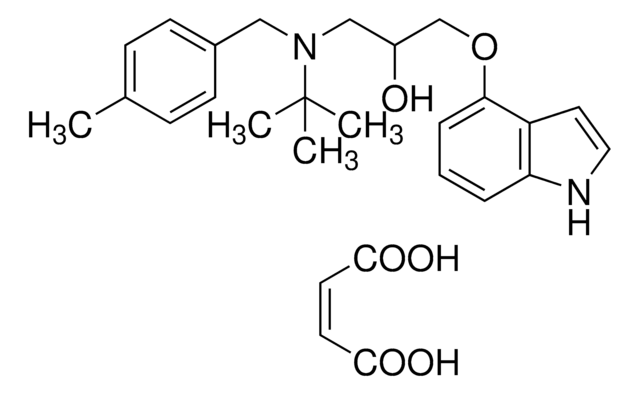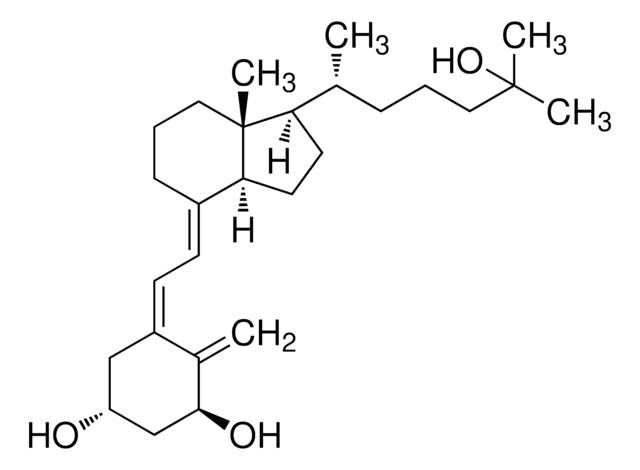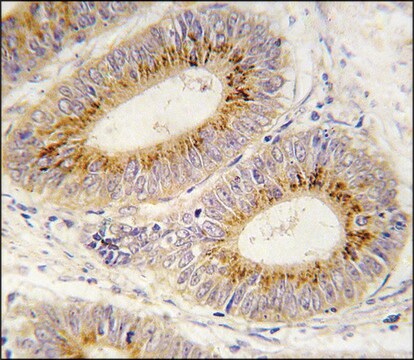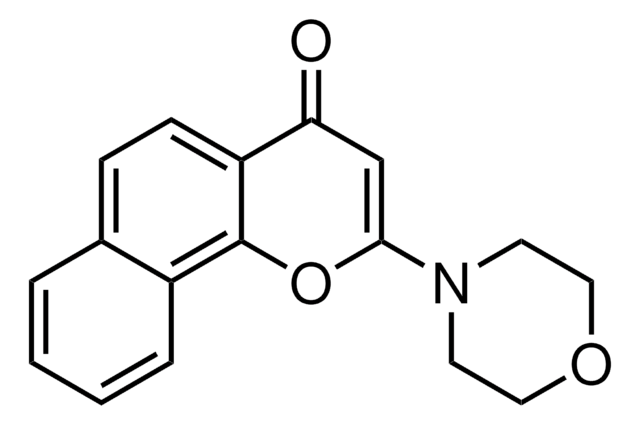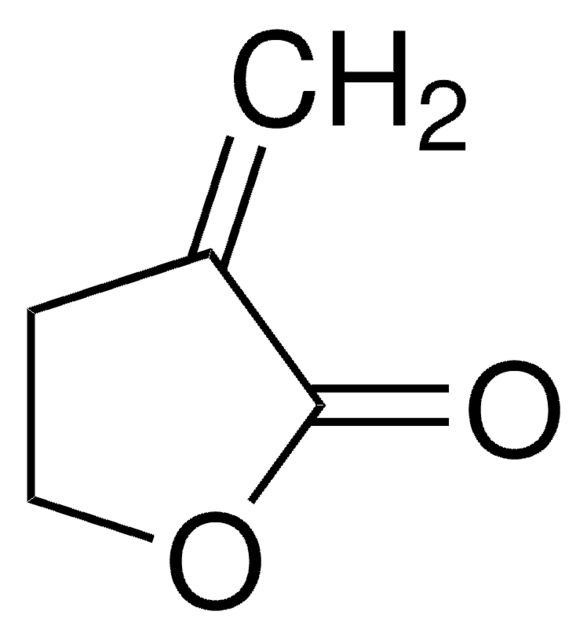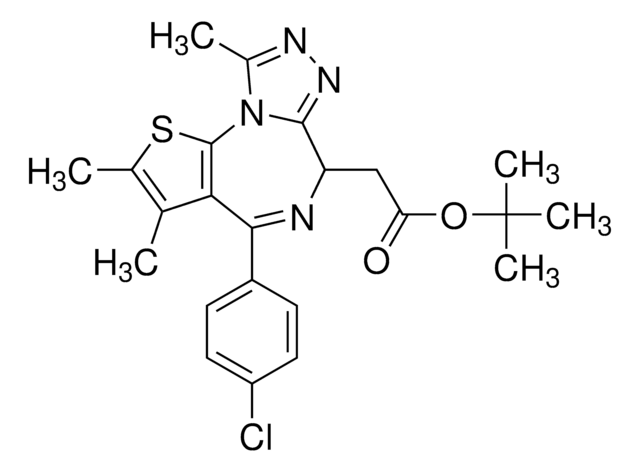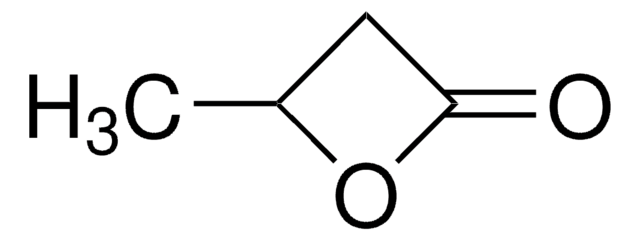M2449
MB-3
≥95% (HPLC)
Synonym(e):
γ-butyrolactone, Butyrolactone 3, (2R,3S)-rel-4-Methylene-5-oxo-2-propyltetrahydrofuran-3-carboxylic acid
About This Item
Empfohlene Produkte
Qualitätsniveau
Assay
≥95% (HPLC)
Form
powder
Farbe
white to off-white
Löslichkeit
H2O: ≥10 mg/mL
DMSO: ≥20 mg/mL
Lagertemp.
−20°C
SMILES String
CCC[C@H]1OC(=O)C(=C)[C@@H]1C(O)=O
InChI
1S/C9H12O4/c1-3-4-6-7(8(10)11)5(2)9(12)13-6/h6-7H,2-4H2,1H3,(H,10,11)/t6-,7+/m1/s1
InChIKey
SRQUTZJZABSZRQ-RQJHMYQMSA-N
Anwendung
- to study its effects on lamin A/C-associated pY19-Cav-2-mediated histone H3 acetylations
- to analyze its effects on the growth of Arabidopsis thaliana seedlings
- to study its effects on craniofacial chondrocyte maturation
Biochem./physiol. Wirkung
Leistungsmerkmale und Vorteile
Lagerklassenschlüssel
11 - Combustible Solids
WGK
nwg
Flammpunkt (°F)
Not applicable
Flammpunkt (°C)
Not applicable
Analysenzertifikate (COA)
Suchen Sie nach Analysenzertifikate (COA), indem Sie die Lot-/Chargennummer des Produkts eingeben. Lot- und Chargennummern sind auf dem Produktetikett hinter den Wörtern ‘Lot’ oder ‘Batch’ (Lot oder Charge) zu finden.
Besitzen Sie dieses Produkt bereits?
In der Dokumentenbibliothek finden Sie die Dokumentation zu den Produkten, die Sie kürzlich erworben haben.
Kunden haben sich ebenfalls angesehen
Artikel
Epigenetic modifications are thought to occur through two key interconnected processes—DNA methylation and the covalent modification of histones.
Unser Team von Wissenschaftlern verfügt über Erfahrung in allen Forschungsbereichen einschließlich Life Science, Materialwissenschaften, chemischer Synthese, Chromatographie, Analytik und vielen mehr..
Setzen Sie sich mit dem technischen Dienst in Verbindung.



